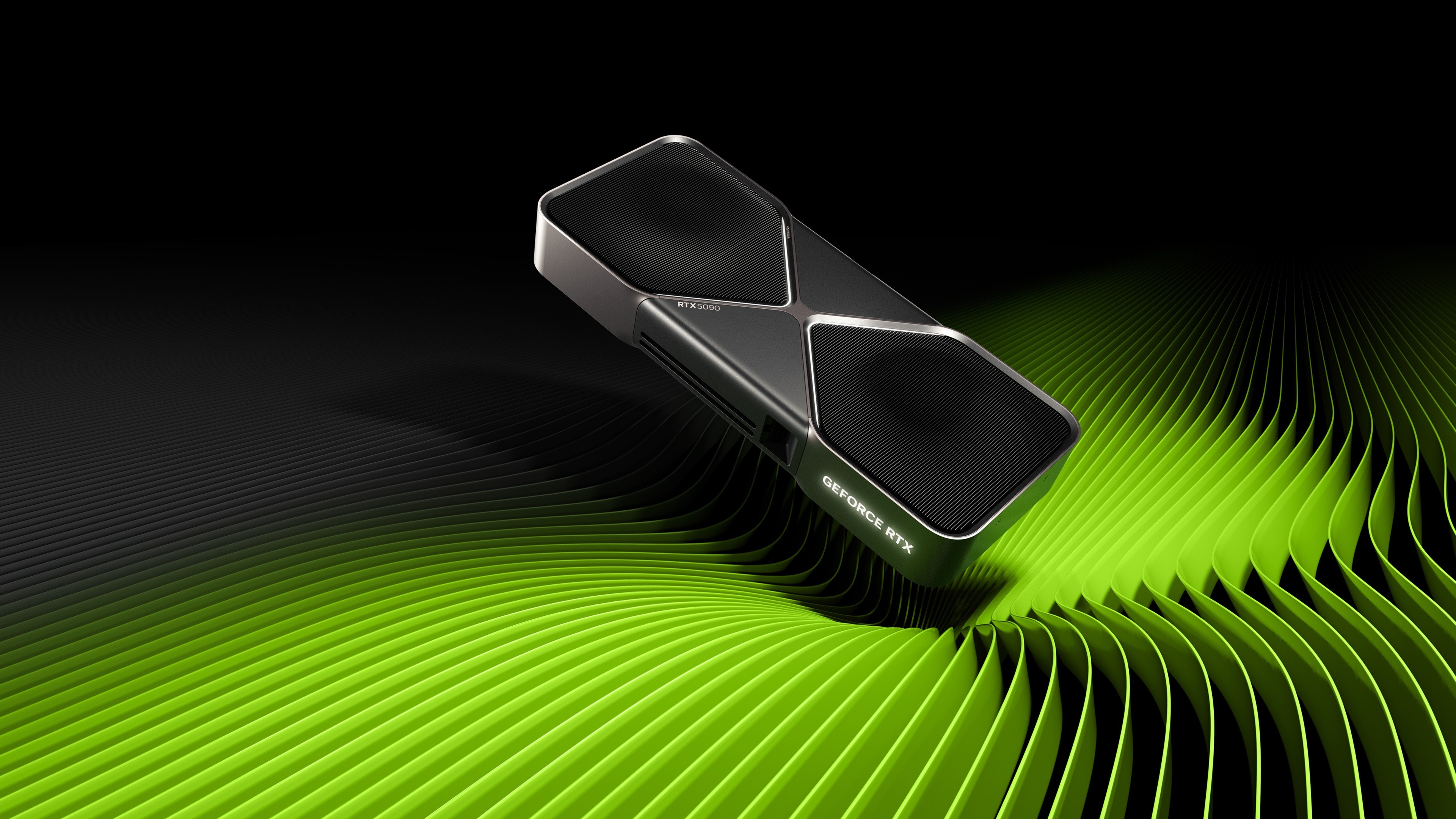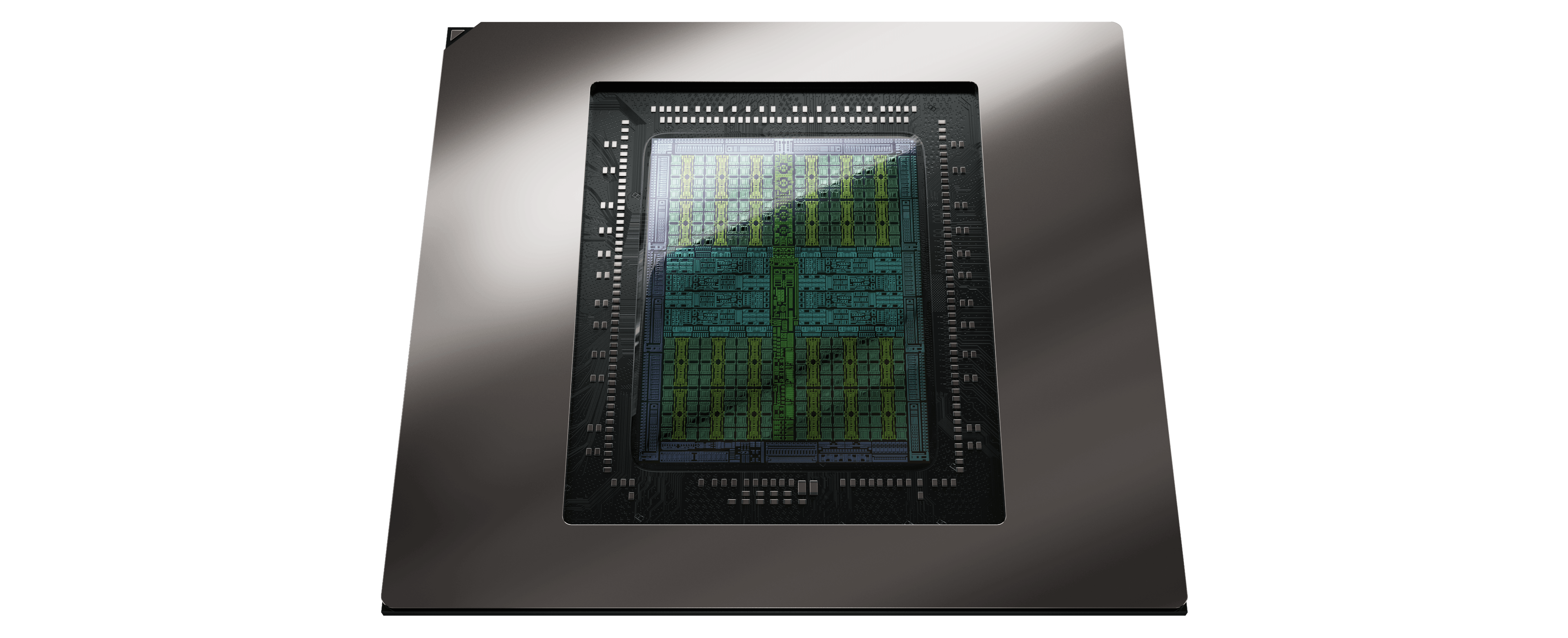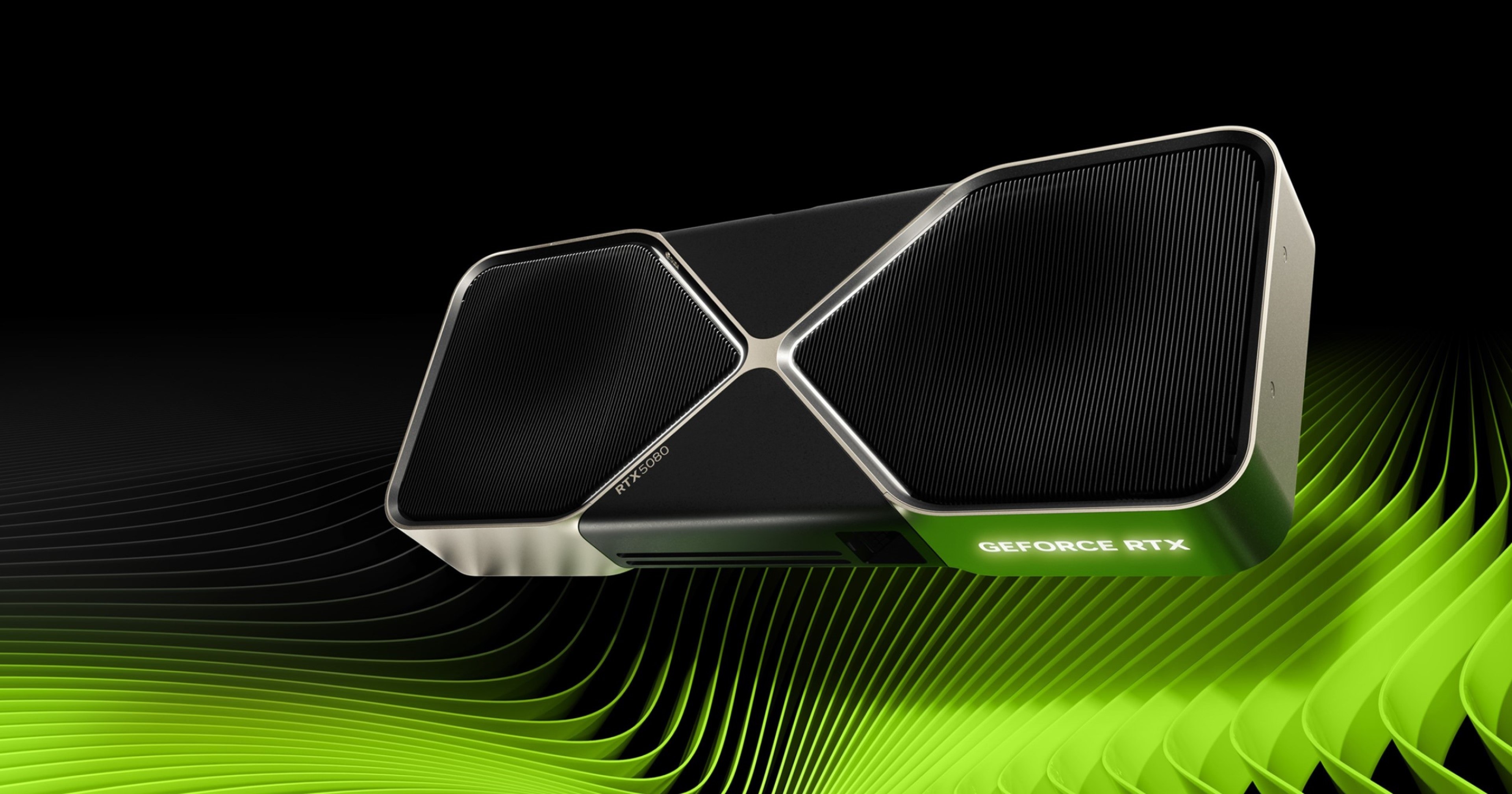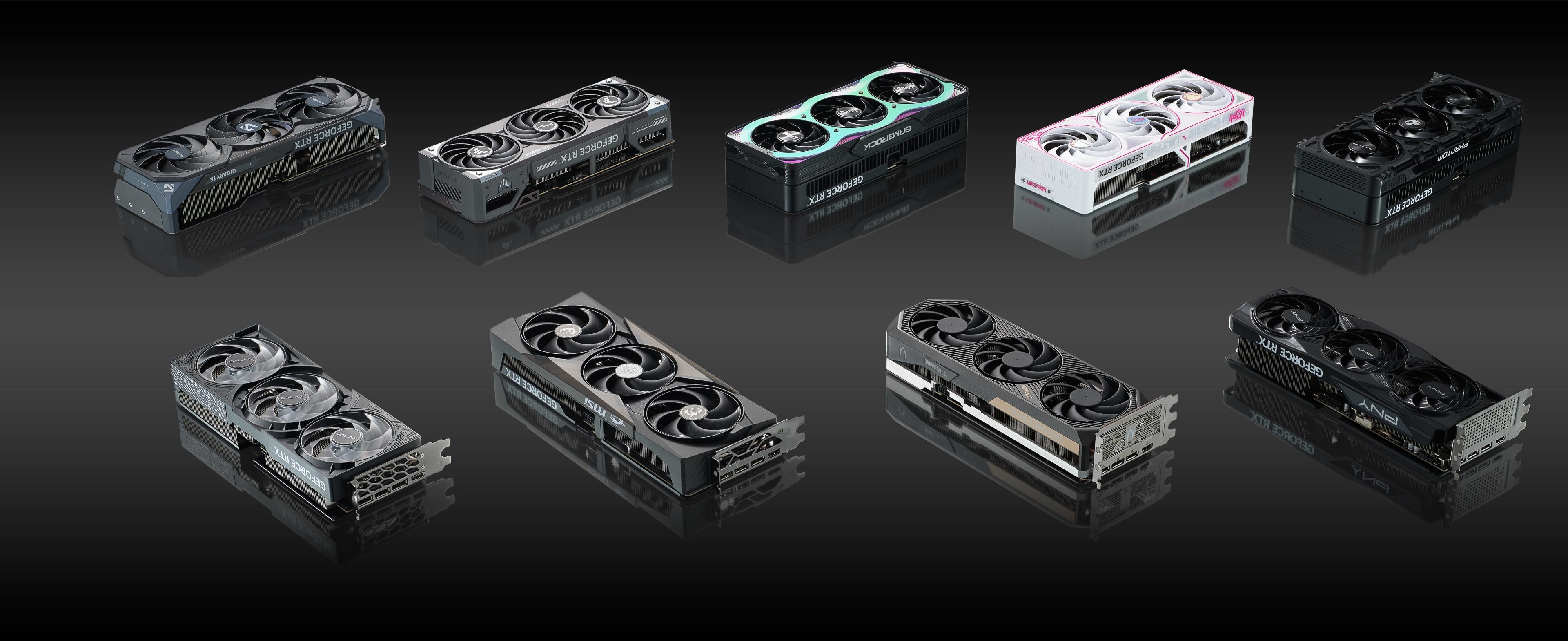
- Nvidia's RTX 5000 series cards have been announced
- RTX 5090 costs $1,999 / £1,999 / AU$4,039
- 5090 and 5080 go on sale January 30
After months of speculation and anticipation, Nvidia finally lifted the cover off its latest lineup of consumer graphics cards, the Nvidia GeForce RTX 5000 series, starting with the flagship RTX 5090.
Nvidia CEO Jensen Huang made the announcement at a packed arena at Las Vegas's Mandalay Bay resort and casino, a headline event that topped off a day of major reveals from rivals AMD and Intel at CES 2025.
However, the Nvidia RTX 5000 series graphics cards were always going to steal the show, no matter what anyone else announced, so Huang naturally had the limelight on Monday night as he unveiled our first definitive look at the RTX 5090 - amongst other new GPUs and fancy AI features.
Meet Nvidia's new flagship GPU, the Nvidia Tita— I mean the Nvidia RTX 5090
It might not be called the Nvidia Titan RTX, but the RTX 5090 might as well be, given the specs on offer and its downright scandalous MSRP of $1,999 (£1,999 / AU$4,039) - not a generational price bump from the RTX 4090, granted, but still a ludicrous amount of money for an ostensibly 'consumer' graphics card.
With an astounding 92 billion transistors, next-gen Tensor Cores and Ray Tracing Cores, and more than double the AI processing speed of the 4090, the RTX 5090 will unquestionably be the most powerful consumer graphics card on the planet, and it won't even be close.
Pair the GPU specs with 32GB of shiny new GDDR7 VRAM on a massive 512-bit memory bus and PCIe 5.0 x16 interface, it has an astonishing 1792 GB/s of memory bandwidth, with a memory speed upwards of 23.8 Gbps.

Given its specs, not only will this graphics card absolutely blow through native 4K gaming (without upscaling) at the highest settings (including ray tracing), it's arguably the first real 8K graphics card given the amount of VRAM it has and its memory bandwidth, two key specs that allow a graphics card to process the substantially larger 8K texture files needed for gaming at that resolution.
Of course, few games even support 8K resolution, much less have developers and artists effectively wasting their time on texture files so large that only a rare few will ever see them as intended. But there's no doubt that if 8K gaming ever becomes a thing, the RTX 5090 will be more than ready to meet the challenge.
Of course, that doesn't really address the fact that this is no longer a gaming GPU— not anymore, and not at this price. And if (well, when) scalpers get involved, it's going to be far worse.
After all, we called the $1,199 price tag on the flagship RTX 2080 Ti 'almost obscene' in our review three GPU generations ago. With no generational price drop from the already wildly expensive RTX 4090, it's not hard to argue that the RTX 5090 is purely a professional workstation GPU, meant to process raw 4K video streams or render lengthy 3D generated sequences at Pixar or some other animation studio. As fun as it might be, this is not a graphics card meant to play Wolfenstein 3D.
The Nvidia GeForce RTX 5090 is set to go on sale for $1,999 on January 30.
The Nvidia GeForce RTX 5080 will launch alongside the 5090
In a move that has been telegraphed for a while, the Nvidia GeForce RTX 5080 will also be part of the first wave of Nvidia's new graphics cards to hit store shelves later this month.

The RTX 5080 looks to be almost exactly half of the RTX 5090 in terms of specs. Although Nvidia has yet to release a comprehensive spec sheet for the new GPUs - a strange move, though likely one designed to avoid distracting from all the new AI features - we know that the 5080 has 1,801 AI TOPS (trillion operations per second), a little under half the RTX 5090's 3,352.
It also has new GDDR7 VRAM as well, with a pool of 16GB on a 256-bit memory bus for 960 GB/s of memory bandwidth - again, basically half the specs of the 5090's VRAM. Its memory speed is a blazing fast 30 Gbps, which helps make up for the narrower memory bus.
The card will go on January 21st with an MSRP of $999 (expected £999 / AU$2,019), which again matches the launch price of the previous-gen RTX 4080.
Nvidia RTX 5070 and RTX 5070 Ti also unveiled - but you'll have to wait
The Nvidia RTX 5070 and 5070 Ti also debuted on Monday night, likely an effort from Nvidia to reassure gamers that they haven't forgotten about the midrange market - especially with its main rival AMD refocusing to target the budget and midrange space exclusively with its new GPUs.
Again, we don't have the breadth of specs we'd hoped to see at this point, but we do know that the RTX 5070 Ti offers 1,406 AI TOPS while the RTX 5070 has 988 TOPS. As a rough point of comparison, Apple's new M4 chip caps out at around 38 TOPS - so a dedicated GPU is arguably still a necessity for serious AI workloads.
Over on the VRAM front, the RTX 5070 Ti's memory profile is nearly identical to the RTX 5080, with 16GB GDDR7, a memory speed of 28 Gbps on a 256-bit bus, and a memory bandwidth of 896 GB/s, making it more than ready for 4K gaming. Meanwhile, the RTX 5070 has 12GB of GDDR7 at 672 GB/sec - still faster than the RTX 4070, though the same base amount of VRAM.

The Nvidia GeForce RTX 5070 and 5070 Ti will go on sale in February - date to be confirmed - with respective retail prices of $549 (£549 / AU$1,509) and $749 (£749 / AU$1,109). This is actually quite pleasing to see, since the RTX 4070 retailed at $599 - meaning we finally have a generational price drop from Nvidia.
DLSS 4, Reflex 2, and more
In addition to the new hardware, Nvidia also showcased a selection of upgraded AI features debuting with the 'Blackwell' RTX 5000 generation of graphics cards.
Chief among these, of course, was DLSS 4 - the latest update to Nvidia's resolution upscaling software, which allows for better framerates in-game by rendering the game at a lower resolution and upscaling it to a target resolution (say, 1080p to 4K) using AI.
DLSS 4 will also feature 'Multi Frame Generation', an improved version of the Frame Generation tech seen in the RTX 4000 generation, which uses AI to extrapolate and produce additional frames and 'insert' them between ordinary rendered frames to boost framerate. Unfortunately for users on older GPUs, only the regular DLSS 4 upscaling will be available on older cards; Multi Frame-Gen will be exclusive to RTX 5000 cards.
We're also getting Nvidia Reflex 2, a new version of the Reflex software for reducing input latency in games. Reflex 2 will feature 'Frame Warp', which aims to proactively insert generated frames by reading mouse input before it even reaches the display - this can reportedly reduce input latency by as much as 75%.
RTX 5000 is also bringing AI powers to shader tech with new RTX Neural Shaders. This uses small AI networks in the GPU's programmable shader units to deliver 'film-quality' shading and lighting in-game. 'RTX Neural Faces', along with new RTX tech for hair and skin rendering and animation, promises to deliver more realistic humans than ever before.
Lastly, we can expect to see more of Nvidia ACE with this generation of RTX GPUs - the improved AI capabilities of the Blackwell generation mean that projects like Nvidia's (slightly creepy) AI NPC tech can be implemented on a wider level, with ACE-powered characters planned to appear in a handful of titles including PUBG: Battlegrounds and InZOI.







